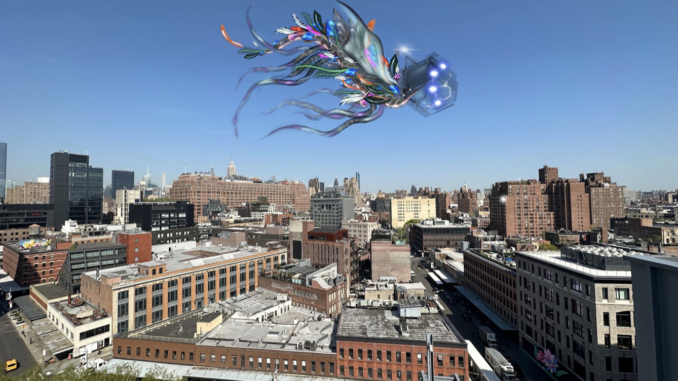
By Paulina Gajewski
The Whitney Museum of American Art is home to over 25,000 pieces of American art, spanning the nineteenth to twenty-first centuries. With 3,500 artists under its belt, the Whitney will house a first-of-its-kind art installation from California-based artist Nancy Baker Cahill, one that visitors can create along with it. The exhibit will launch on Oct. 3 at the Whitney, where CUNY students can enter for free.
CUNY offers a diverse pool of options for students to expand their interests outside of the academic realm. Museums across the city are great resources, and CUNY students are in a unique position as they are offered free admission to several of these, including the Whitney.
Cahill’s medium includes new media, which consists of any technologies that allow an individual to communicate digitally. This also includes augmented and virtual reality. Virtual reality is a form of media in which users are controlled by the system they choose, whereas in augmented reality, which is what Cahill’s new digital project called “CENTO” uses, users can modify the real world. Cahill utilizes her “interdisciplinary artistic practice and the role of emerging technologies in contemporary art,” according to the Georgia Museum of Art, where Cahill premiered her first solo museum show.
Her previous work has most commonly been utilizing projections, one of which was featured in Times Square. The medium of her work allows for it to become colossal and formidable, projected onto any surface that has a screen. The Whitney has dabbled in new media art, even providing a space on their website called “Artport,” an online gallery space commission of net art. Net art uses the internet as its primary medium and is displayed on virtual interfaces.
Cahill’s newest work will be completely out of the ordinary. “CENTO” takes its name from Latin, and generally refers to a poem composed of many odd fragments. In a similar way, the creature that “CENTO” is meant to embody takes its form from many different animals.
Its serpentine body is meant to fly over the terrace of the Whitney. “CENTO” will be lined with scales and fungus, squid-like limbs, manta ray wings, and vibrant feathers. The creature is meant to embody the need for coexistence and evolution in the face of a climate crisis. “CENTO’s metamorphosis over time underscores the necessity of collaborative action and materializes species’ interdependence and entanglement,” as stated on the Whitney exhibition page. Though pulled from animals, “CENTO” will not look natural in the slightest, with its overwhelmingly robotic features.
Augmented reality was meant to immerse individuals into a virtual world. Cahill’s work, however, will push the boundaries of how immersive and collaborative AR could be. Visitors of the Whitney can access the experience through the app “4th Wall,” created by Cahill herself. “I was trying to create an experience for the viewer where they would walk in and feel transformed, and feel a kind of transcendence in their bodies,” Cahill said in an interview with art podcast Clever. Each individual will add their own feather, and with each contribution, the creature will grow stronger.
In the face of abrupt modern and technological change, virtual and augmented realities contribute to the fear of hyper-individualism, alienation, and the loss of community and human connection. “CENTO” aims to prove the opposite. The artwork takes the concept of art as individualistic and alienated to one that is collective, emphasizing the need for community and coexistence.
